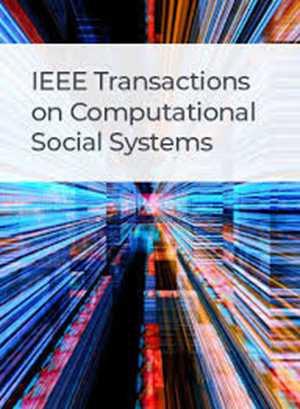利用深度学习技术早期检测和预防 Twitter 上的恶意用户行为
IF 4.5
2区 计算机科学
Q1 COMPUTER SCIENCE, CYBERNETICS
IEEE Transactions on Computational Social Systems
Pub Date : 2024-07-12
DOI:10.1109/TCSS.2024.3419171
引用次数: 0
摘要
推特上有组织的虚假信息传播活动继续泛滥,即使该平台通过其透明度中心承认此类活动。这些欺骗性活动对包括气候变化在内的重要社会问题产生了重大影响,从而推动了旨在精确定位和拦截这些恶意行为者的研究。目前用于检测机器人的算法利用了从用户配置文件、推文和网络配置中提取的一系列数据,取得了值得称道的成果。然而,这些策略主要集中于事后识别恶意用户,依赖于根据历史活动对个人进行分类的静态训练数据集。与这种方法不同的是,我们主张采用一种前瞻性方法,利用用户数据在潜在威胁发生之前对其进行预测和缓解,从而培养出更加安全、公平和公正的网络社区。为此,我们提出的技术可以在任何恶意行为发生之前,通过追踪用户嵌入的预测轨迹来预测恶意活动。为了进行验证,我们采用了动态有向多图范例来记录 Twitter 用户之间不断发展的互动。在与相同的数据集进行对比时,我们的技术在有害用户的预测性识别方面以令人印象深刻的 40.66% 的 F 分数(F1 分数)超越了当代的方法。此外,我们还进行了模型评估,以衡量不同系统元素的效率。本文章由计算机程序翻译,如有差异,请以英文原文为准。
Early Detection and Prevention of Malicious User Behavior on Twitter Using Deep Learning Techniques
Organized misinformation campaigns on Twitter continue to proliferate, even as the platform acknowledges such activities through its transparency center. These deceptive initiatives significantly impact vital societal issues, including climate change, thus spurring research aimed at pinpointing and intercepting these malicious actors. Present-day algorithms for detecting bots harness an array of data drawn from user profiles, tweets, and network configurations, delivering commendable outcomes. Yet, these strategies mainly concentrate on postincident identification of malevolent users, hinging on static training datasets that categorize individuals based on historical activities. Diverging from this approach, we advocate for a forward-thinking methodology, which utilizes user data to foresee and mitigate potential threats before their realization, thereby cultivating more secure, equitable, and unbiased online communities. To this end, our proposed technique forecasts malevolent activities by tracing the projected trajectories of user embeddings before any malevolent action materializes. For validation, we employed a dynamic directed multigraph paradigm to chronicle the evolving engagements between Twitter users. When juxtaposed against the identical dataset, our technique eclipses contemporary methodologies by an impressive 40.66% in F score (F1 score) in the anticipatory identification of harmful users. Furthermore, we undertook a model evaluation exercise to gauge the efficiency of distinct system elements.
求助全文
通过发布文献求助,成功后即可免费获取论文全文。
去求助
来源期刊

IEEE Transactions on Computational Social Systems
Social Sciences-Social Sciences (miscellaneous)
CiteScore
10.00
自引率
20.00%
发文量
316
期刊介绍:
IEEE Transactions on Computational Social Systems focuses on such topics as modeling, simulation, analysis and understanding of social systems from the quantitative and/or computational perspective. "Systems" include man-man, man-machine and machine-machine organizations and adversarial situations as well as social media structures and their dynamics. More specifically, the proposed transactions publishes articles on modeling the dynamics of social systems, methodologies for incorporating and representing socio-cultural and behavioral aspects in computational modeling, analysis of social system behavior and structure, and paradigms for social systems modeling and simulation. The journal also features articles on social network dynamics, social intelligence and cognition, social systems design and architectures, socio-cultural modeling and representation, and computational behavior modeling, and their applications.
 求助内容:
求助内容: 应助结果提醒方式:
应助结果提醒方式:


